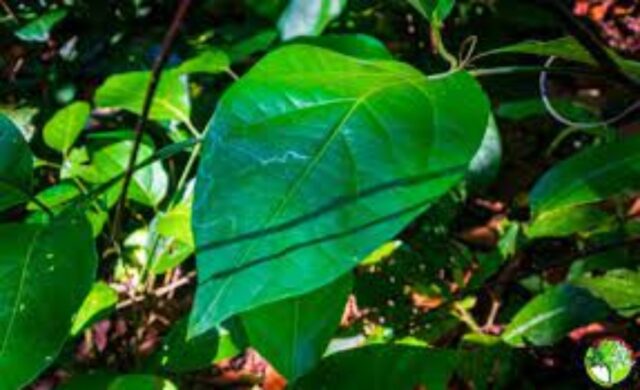The ancestral wisdom contained in Ayahuasca –whose ingredients are illegal in most countries of the world– is not only shown in its well-known hallucinogenic experiences, sometimes accompanied by important spiritual revelations. Nor is it an alternative when it comes to regulating emotions and becoming, due to its therapeutic effect, a hypothetical potential in the treatment of disorders such as depression, as various scientific investigations have already confirmed.
This shamanic drink, typical of Amazonian countries such as Colombia, Peru, Brazil and Ecuador, contains an active principle that, in addition, is capable of promoting the formation of new neurons. An unusual finding that opens a new path for the treatment of neurodegenerative diseases, such as Alzheimer’s or Parkinson’s.
Scientists from the Complutense University of Madrid have found, after a four-year study, that Ayahuasca is capable of forming neurons in the hippocampus – a part of the brain that is largely responsible for memory and learning – and other neural cells such as astrocytes and oligodendrocytes.
The substance responsible for inducing it is precisely the same substance that promotes the hallucinogenic effects in this concoction. It is about dimethyltryptamine, known as DMT, which is found in the leaves of the chacruna (Psychotria viridis), one of the ingredients that is part of this shamanic tea.
Awakening neural stem cells

“The possible use of Ayahuasca aims to awaken neural stem cells in adults and convince them to form new nerve cells. This would allow the replacement of neurons that die as a result of neurodegenerative diseases. In neurodegenerative diseases, the death of certain types of neurons causes the symptoms of pathologies such as Alzheimer’s and Parkinson’s”, explains José Ángel Morales, co-author of the study and professor and scientific researcher in the Department of Cell and Cyberned Biology.
The team of researchers worked first on cells in vitro and then injecting Ayahuasca into a group of mice over a period of three weeks, and at regular intervals. These mice were presented with a variety of tasks designed to assess their memory and learning, and, in fact they performed better at these tasks after receiving a treatment with this drink, indicating that the newly formed neurons were they had become functional, with which the cognitive capacities of these animals were increased.
The activity of stem cells where new neurons are formed is especially intense during embryonic development, but when we grow their action declines. Even so, our adult brain has all the cellular machinery necessary for the formation of new neurons, but it does not use it on a regular basis.
“This ability to modulate brain plasticity indicates that the brain itself has great therapeutic potential for a wide range of psychiatric and neurological disorders, including neurodegenerative diseases,” Morales points out.
Accessing the nervous system without problems
DMT has the peculiarity that, when consumed, it is degraded in the stomach, so it could never reach the brain and would not have a hallucinogenic effect (when consumed to have a mystical experience) or therapeutic action (as indicated by these investigations). That is why shamanic communities, when preparing the infusion, mix the leaves that contain DMT with the liana, which contains high concentrations of substances called beta-carbolines that block stomach enzymes, preventing DMT from degrading and can access the nervous system without problem.
“This combination of plants in a single infusion is an incredible achievement of the ethnopharmacological knowledge of the indigenous Amazonian cultures. They already knew that if they wanted a mystical experience they had to mix these two types of leaves because otherwise the DMT would never reach the brain”, Morales comments.
When applying the treatment in humans, the drug would have to be administered with inhibitors of this enzyme so that the DMT reaches the brain and, in addition, with a hallucinogenic receptor antagonist to avoid these side effects, the scientists insist.
There are many recipes for the preparation of this drink. In fact, more than a hundred different botanical species used as Ayahuasca additives have been documented, according to the International Center for Ethnobotanical Education, Research and Service (ICEERS). However, this shamanic concoction is usually the result of boiling the crushed bark or stems of liana lianas (Banisterioosis caapi) together with the leaves of another plant, a shrub known as Chacruna (Psychotria viridis).
Preserving the culture
“I am fascinated that this knowledge of plants has been passed down generation after generation for more than five thousand years. All this culture has been preserved, which today is offered as a way to reconcile with oneself and clean and heal traumatic aspects that we carry within”, adds Adrià Montesinos. He is a young mentor, 25 years old, who went with his mother and brother on a trip to Colombia. For two weeks they lived with shamans in the middle of the Amazon jungle and one night they held their first ceremony, in which they drank Ayahuasca.
The concoction of the indigenous communities, says Montesinos, changed his life: from the way he saw it to how he lived it. The following year he traveled alone to this corner of the planet and two years later he returned again. In one of his stays, he stayed up to six months to better understand the culture.
This graduate in Communication from the Ramon Llull University, who is now studying transpersonal psychology, believes in the wisdom of the American jungle and points out that “not everything is mindfulness”. He says that his life had a turning point after trying Ayahuasca: he realized that “we are not separate beings from what surrounds us, from the universe.” Immersed in the hallucinogenic effects of this concoction, he experienced unity consciousness and other revelations such as forgiveness, the relevance of the spiritual field and gratitude, he explains.
A wisdom that transformed him and that he now shares to help other people get out of their comfort zone and become aware of themselves. “We are co-creators of our world. When we accept part of the responsibility that we have, our environment begins to change”, he assures.
New perspective on reality
Used for centuries for medicinal purposes, this drink acts on key areas of the association cortex (responsible for thinking, emotional behavior and perception). It also modifies the flow of information in the brain by inducing changes in cognition. For this reason, it is said to provide a new perspective on reality.
In Europe, there have been some studies in hospitals administering Ayahuasca to people with psychiatric disorders, but more research on its effects is still lacking. And it is that results of other scientific studies suggest that Ayahuasca may have a possible therapeutic effect when it comes to regulating emotions and attention span.
And that hypothetical potential as a treatment for neurological and emotional disorders, including depression, has sparked a lot of interest from the Western scientific community in this concoction in recent years. “It could be a very valuable tool in the treatment of addictions, in people with suicidal tendencies or in patients suffering from psychiatric disorders based on an emotional disorder, such as depression,” Morales points out.
Although in some countries the celebration of Ayahuasca ceremonies became fashionable as a type of experience, in Spain both the active principle DMT and the plants that contain it are prohibited, except for scientific uses. In other countries it is allowed to have the plant as long as the active principle is not extracted.
Another benefit of the finding of this work, published in Translational Psychiatry, is that Ayahuasca “manages to stimulate the neural stem cells that we already have in the brain, so other invasive therapeutic procedures such as stem cell implantation are not necessary” Morales clarifies.
Despite this, “we have seen that the administration of DMT awakens these neural stem cells, which are activated under normal conditions, but we still have to know what would happen in pathological situations”, clarifies the researcher. What you have to check is whether this also occurs when there is a disease, such as Parkinson’s. “The challenge is to activate that ability to form neurons that we have asleep and in this way to be able to replace the neurons that die as a result of the disease,” adds Morales.
What motivated the Complutense University of Madrid to carry out the study of Ayahuasca –which means the vine of the dead that connects both worlds–, were the proposals of the pharmacologist and researcher Jordi Riba, from the Sant Pau hospital in Barcelona.
It was Riba precisely who proposed to this university a collaboration for the study carried out, which could represent a step forward in the search for an effective treatment for neurodegenerative diseases. And so it has been: “In the treatment of Parkinson’s, current pharmacological therapies are intended to treat the symptoms of the disease and are usually effective for a period of between 5 and 6 years, after which they can have significant side effects. Unfortunately there are no treatments to stop the disease or to reverse it. Every small step for a final treatment for these diseases is very important,” Morales points out.

